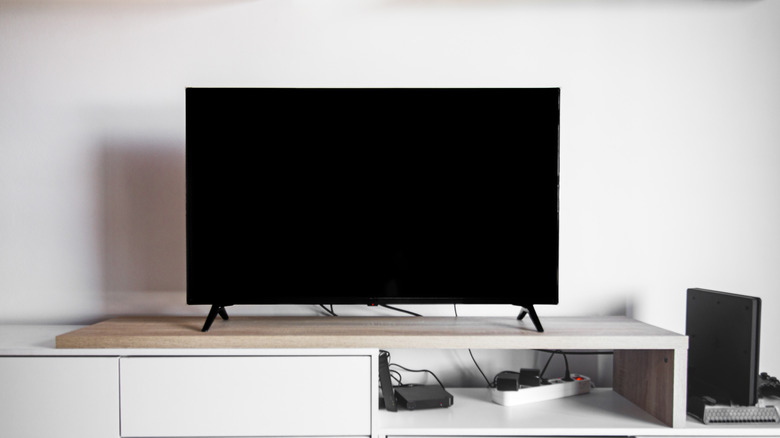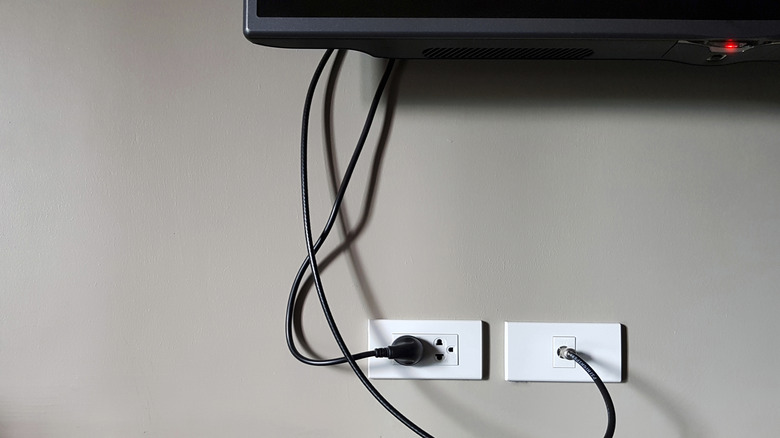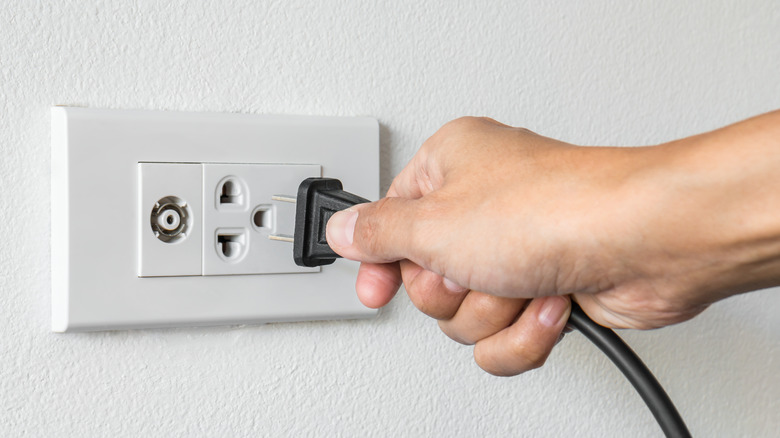Does A TV Use Electricity In Standby Mode?
If you're like many people, you likely leave your TV plugged in 24/7 without giving it a second thought. When we power off our televisions after streaming our favorite series or defeating the final boss during a late-night gaming session, we assume it's completely turned off. But you've almost certainly noticed there are still some lights on the TV, so it begs the question: does your TV still draw power after you've turned it off?
While it may seem counterintuitive, even after you have powered it off, your TV will continue to draw power in standby mode. If you're wondering why, it's because it needs that power draw for its standby mode features. By remaining in a low-power state, your TV remains ready to respond to the commands from your remote control or voice commands, as well as allowing it to power on quickly. This low-power state also allows it to download updates for the TV or your apps.
TVs do consume power in standby mode
All of this isn't entirely free and comes at a small cost in terms of energy, a phenomenon commonly referred to as a "phantom load" or "vampire power." If you're trying to avoid mistakes that could increase your electric bill, that may seem like a problem. While that may sound wasteful, it's nothing to lose sleep over. Just like phone chargers use electricity when not in use, your TV consumes a small amount of power.
The good news is that the small amount of energy your TV uses when it's in standby mode is relatively low, typically between 0.5 and 3 watts, depending on the model. If we do the math using the average electricity rate of 16.44 cents per kilowatt-hour in the US, a TV drawing 1 watt in standby mode 24/7 would cost about $1.44 per year, while one drawing 3 watts would cost roughly $4.32 annually. If you have an energy-efficient model, that total could be even lower, while one with more advanced "always-on" features could end up costing you more. Still, if you're using an older TV, have multiple devices plugged in for long periods around your home, or simply want to use as little energy as possible, you may want to unplug them when not in use.
How to cut back on your TV's power use
While your TV uses very little energy when in standby mode, many of us have habits that lead to higher overall electricity use than we realize. If you're guilty of leaving the TV on as background noise or using its maximum brightness settings, you've been unnecessarily increasing your energy consumption and possibly your electric bill without even noticing. One of the easiest ways to reduce your TV's power use is to turn down its brightness. Your TV may have come with the brightness level set to high; dialing this back will help you save energy.
Another thing you can do is use your TV's energy-saving mode. Almost all modern TVs have eco or power-saving settings that optimize energy consumption by automatically adjusting screen brightness, disabling quick-start features, or turning off the display after periods of inactivity. You might also want to consider investing in smart plugs to save energy and maybe even money on your electric bill. It may seem obvious, but simply making a habit of powering down your TV is another simple way to cut back on your energy use. As convenient as it can be, you should reconsider using your TV as a speaker or photo display in ambient mode for long periods. These features keep your screen and internal components partially active, which can use up a lot of energy, even if the TV looks like it's idle.


